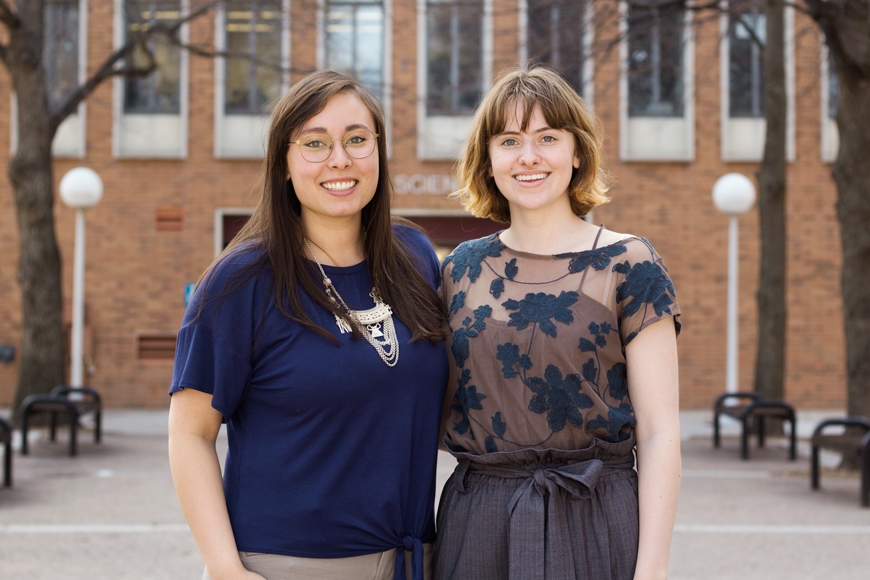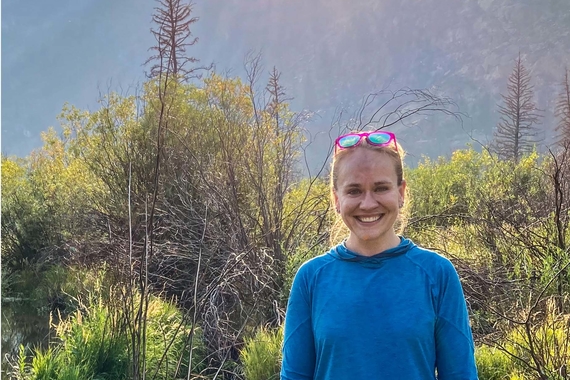Research in the First Person
Reading a book, listening to a lecture, and pouring over someone else’s research are common ways that students add to their knowledge. But sometimes, through real-world experience, first-hand observation, and collaboration, students can create knowledge that goes beyond books and lecture halls. It can help real people with real concerns, like the loss of their land, for example.
Erin Jones and Karah VueBenson, two undergraduate geography students at the University of Minnesota, came to this conclusion last fall after taking a research trip to work with the Gullah/Geechee Nation in the southeast United States.
“It’s nice to read about a place, but it means so much more to actually see it,” Jones says.
Jones and VueBenson travelled with geography professor Kate Derickson along the coast from Florida through Georgia and South Carolina during the three-day trip. Derickson has worked with the Gullah/Geechee for the past four years.
The Gullah/Geechee people are descendants of enslaved people brought over from the west coast of Africa to work on rice plantations on sea islands along the southeast coastal region of the US.
During the Civil War and Reconstruction, many bought land in the region on, what were at the time, remote islands that often did not have roads and bridges leading to them. The Gullah language and culture, which began during slavery, was shaped in part because of this relative isolation. Today, Gullah/Geechee people have spread throughout the US, but a substantial population continues to live along the southeast coast.
After taking an introductory course with Derickson, Jones and VueBenson began assisting Derickson’s research last year. Collaborating with Gullah/Geechee was crucial to understanding the work.
“You can’t get a whole picture unless you are actually there,” VueBenson says.
Documenting Experiences, Changing Narratives
During the trip, Jones and VueBenson interviewed several Gullah/Geechee people to better understand many of the challenges they face.
Gullah/Geechee land is valuable real estate in the coastal region, which has made it the target of real estate developers and large companies hoping to turn these natural resources into profit.
More so, developers have taken advantage of little-known land laws that make Gullah/Geechee property vulnerable. Some Gullah/Geechee land is considered “heirs’ property,” which is based in familial and communal ownership. Essentially, land is owned “in common” by multiple heirs, who own a percentage of the whole property (not a “piece”). After properties pass down through several generations, it can add up to hundreds of people who legally own a segment of land. Any one of the co-owners can force the group to sell land, even without the full consent of other owners. While heirs can buy the property, the market rate of the land is often too expensive.
Developers will buy large parcels of land from individual heirs—some of whom don’t even realize that others still live on the territory—and manipulate land laws to edge other owners out. The practices have lead to the displacement of many Gullah/Geechee people, many of whom owned the land for a century.
The problem is only exacerbated by racial inequalities that have existed since slavery.
Jones and VueBenson explained that many Gullah/Geechee expressed anxiety and concern about the loss of historical land and their displacement. Too often, these concerns are overlooked or ignored by policy makers.
“A lot of the stories being told about the places they are living are completely erasing what it means to have ancestry on that land,” says Jones.
Working with the Gullah/Geechee to understand their experiences is a crucial for researchers. Jones explains that documenting these experiences helps researchers and communities “produce narratives” that outline what is happening, better inform people outside the Gullah/Geechee community about their struggles, and induce change.
This work represents a form of engaged scholarship, in which academics and researchers lend their skills to communities advocating for change.
“A lot of what [Dr. Derickson] does, and what she’s trained us to do, is to really work with the people,” says VueBenson.
This collaboration allows academics to work in an activist capacity to “co-produce knowledge,” putting research to use solving real-world problems.
Jones and VueBenson believe collaboration between academics and communities is essential for the field of geography. They both see value in using academic work to solve real-world problems, especially by collaboratively making knowledge with communities like the Gullah/Geechee Nation.
“[It’s] about doing research to produce data that can be used by activists,” Jones says.
Affirming the Future
The trip also helped solidify Jones’ and VueBenson’s post-graduate plans. Both are set to graduate in spring of 2018 and have consulted with Derickson about doing research, applying for graduate school, and working in academia.
“For me it was helpful because I haven’t had a mentor like that,” VueBenson says.
VueBenson, who is currently finishing a fellowship with the Minnesota Historical Society, plans to work for a few years, and then apply to grad school. She pointed to Derickson’s research, in addition to her encouragement, as motivation to continue working in geography.
“It makes me feel like I have a place,” VueBenson says.
Likewise, the trip with Derickson reaffirmed Jones’ plan to go to graduate school and study geography.
For her, it comes down to the work.
“I love doing research that I care about,” Jones says.
This story was written by an undergraduate student account executive in CLAgency. Meet the team.



